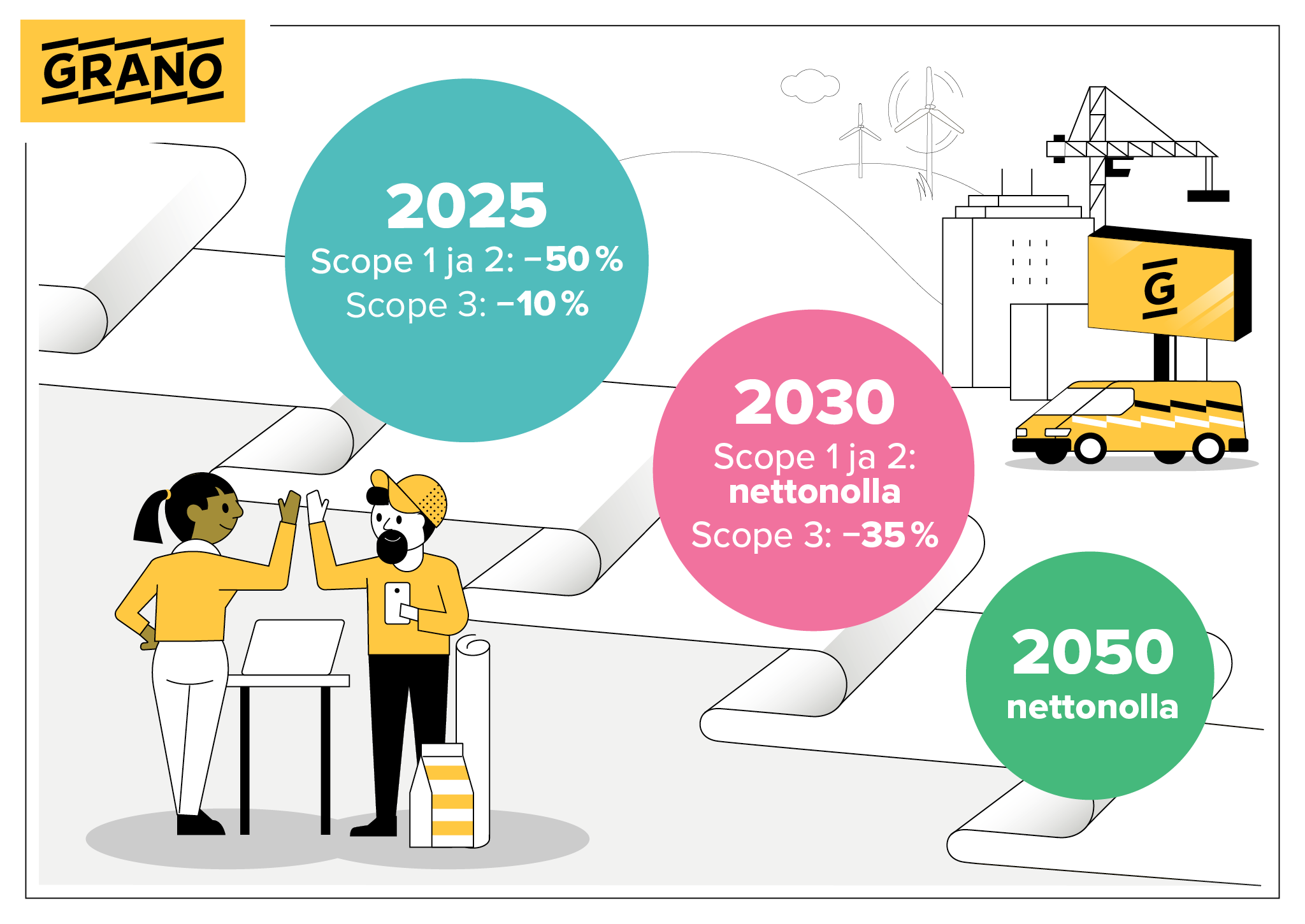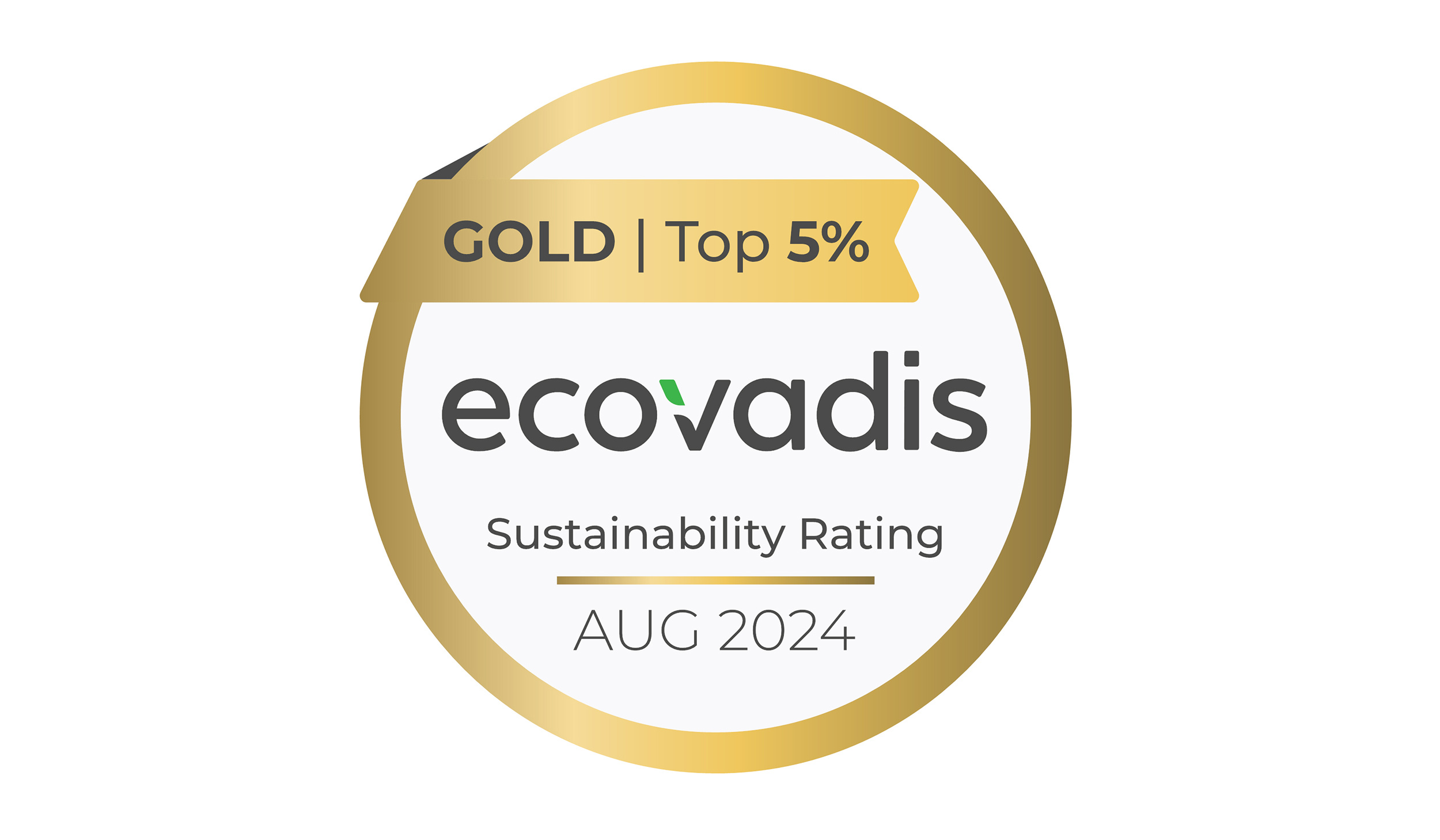
Low-carbon roadmap for 2023–2050
Low-carbon roadmap for 2023–2050
The low-carbon roadmap and the accompanying plan for 2023–2050 present Grano's strategy to reduce carbon emissions and promote environmental responsibility. The goal is to achieve net zero emissions by 2050.
The four key areas of the low-carbon roadmap are carbon emissions and ESG responsibility, energy and transport, emission reduction, and compensation and certification.

1. Carbon emissions and ESG responsibility
In terms of carbon emissions and ESG responsibility, we will pay attention to the selection of suppliers and partners, staff training and involvement as well as waste hierarchy.
We will choose suppliers and partners who adhere to the ESG responsibility principles. We will draw up our Code of Ethics, which includes our environmental responsibility requirements, and distribute it to our suppliers. We will also require suppliers to commit to our guidelines.
We will organise training sessions for staff on the Group's Code of Ethics and environmental policy and maintain them on the intranet. We will also run internal campaigns to encourage environmentally friendly practices.
We will encourage staff to participate in internal environmental working groups and develop new initiatives to reduce carbon emissions. We will reward our staff for introducing and implementing innovative environmental solutions.
We will introduce a waste hierarchy based on waste prevention, re-use and recycling. We will also regularly monitor and report on waste volumes and recycling rates, and improve our operations based on the results.
2. Energy consumption
Our goal is to improve energy efficiency and utilise renewable energy. We will use 100% renewable electricity and heating by 2030.
We will monitor our energy consumption with the aim of reducing it and increasing energy efficiency. We will take energy consumption into account in new investments with the aim of improving energy efficiency. We will focus our efforts on increasing our use of renewable and low-carbon energy sources, which also contribute to reducing our carbon footprint.
3. Reducing emissions
We will reduce Scope 1 and 2 emissions to reach net zero by 2030 by adhering to our energy and car policies. We will reduce Scope 3 emissions by 35% by 2030 and reach net zero by 2050. We will reduce emissions from raw material production by 40% and from raw material transport by approximately 30% by 2030.
We will employ measures to take energy efficiency into account in all new investments. To reduce emissions from printing plates, we will use newer and more advanced technologies, including more inkjet technology.
We will monitor and report on energy efficiency improvements, and favour locally produced materials. We will reduce waste by continuing to optimise our material mix and by increasing automation at different stages of production. We will also reduce emissions from our purchasing logistics by 50%, optimise transport routes, use low-emission modes of transport and choose operators who are committed to our targets.
We will encourage our staff to identify areas for improvement and make suggestions for improvements in energy consumption and reducing carbon emissions from transport. We will also organise idea competitions where staff can come up with solutions to reduce emissions.
4. Offsetting and certification
We will look at ways to offset the remaining emissions, for example through afforestation projects. We will participate in environmental certification programmes and obtain certificates that demonstrate our environmental responsibility.
We will report on offsetting measures on a regular basis. We will also aim to maintain the EcoVadis environmental responsibility gold rating.









